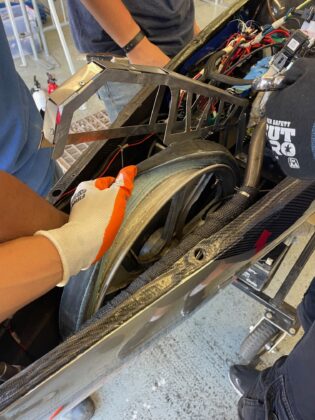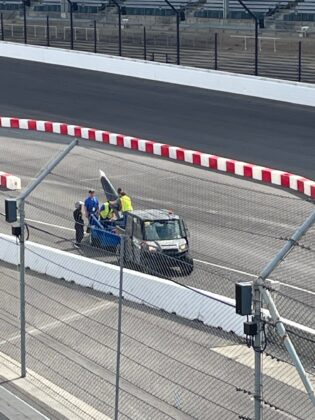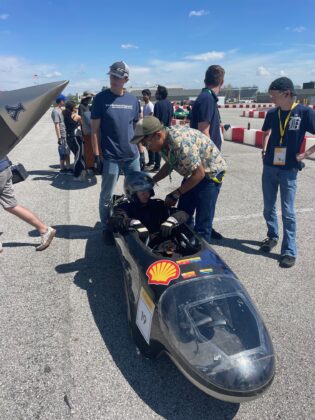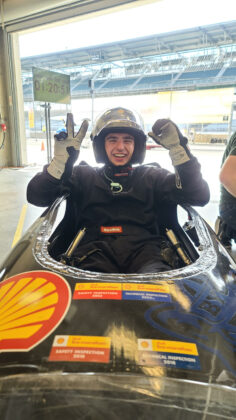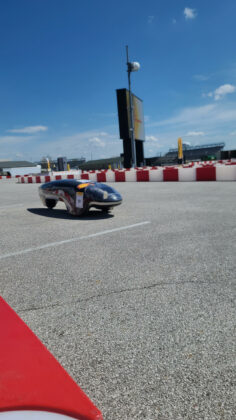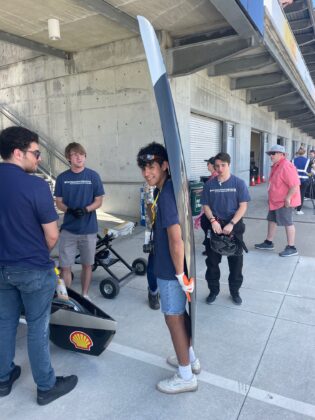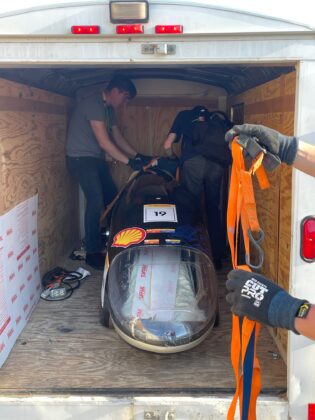While many race cars shoot for speed, BYU’s supermileage team had a different goal in mind — efficiency.
With their car weighing only 110 pounds and powered by an engine the size of a weed-whacker, they were successful. The team traveled 1915.83 miles on a single gallon of gas.
BYU’s supermileage team took home the first place trophy and a $3,000 cash prize at this year’s Shell Eco-marathon competition in Indianapolis, Indiana on April 16. Before this, the team had not competed since 2019.

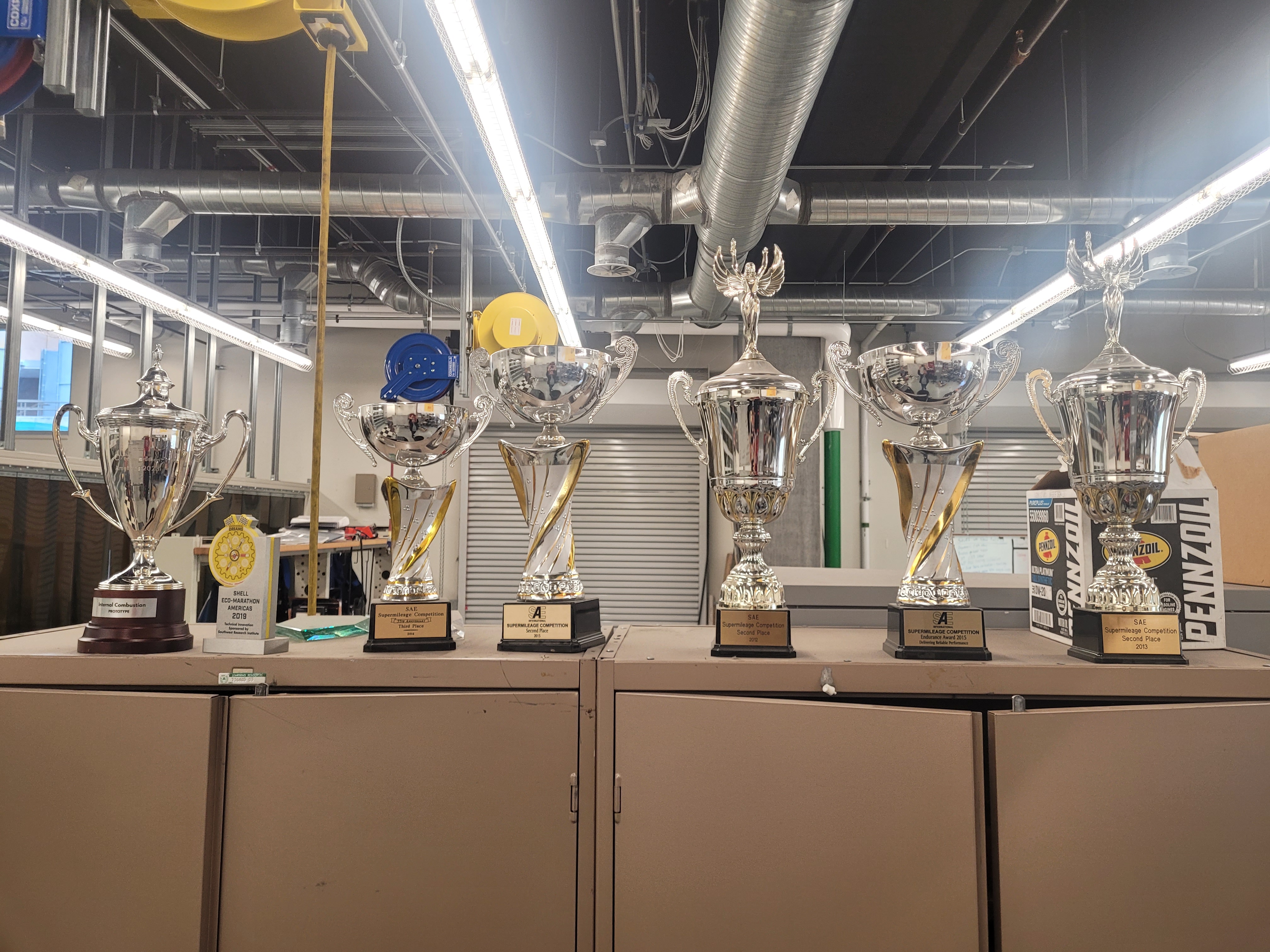
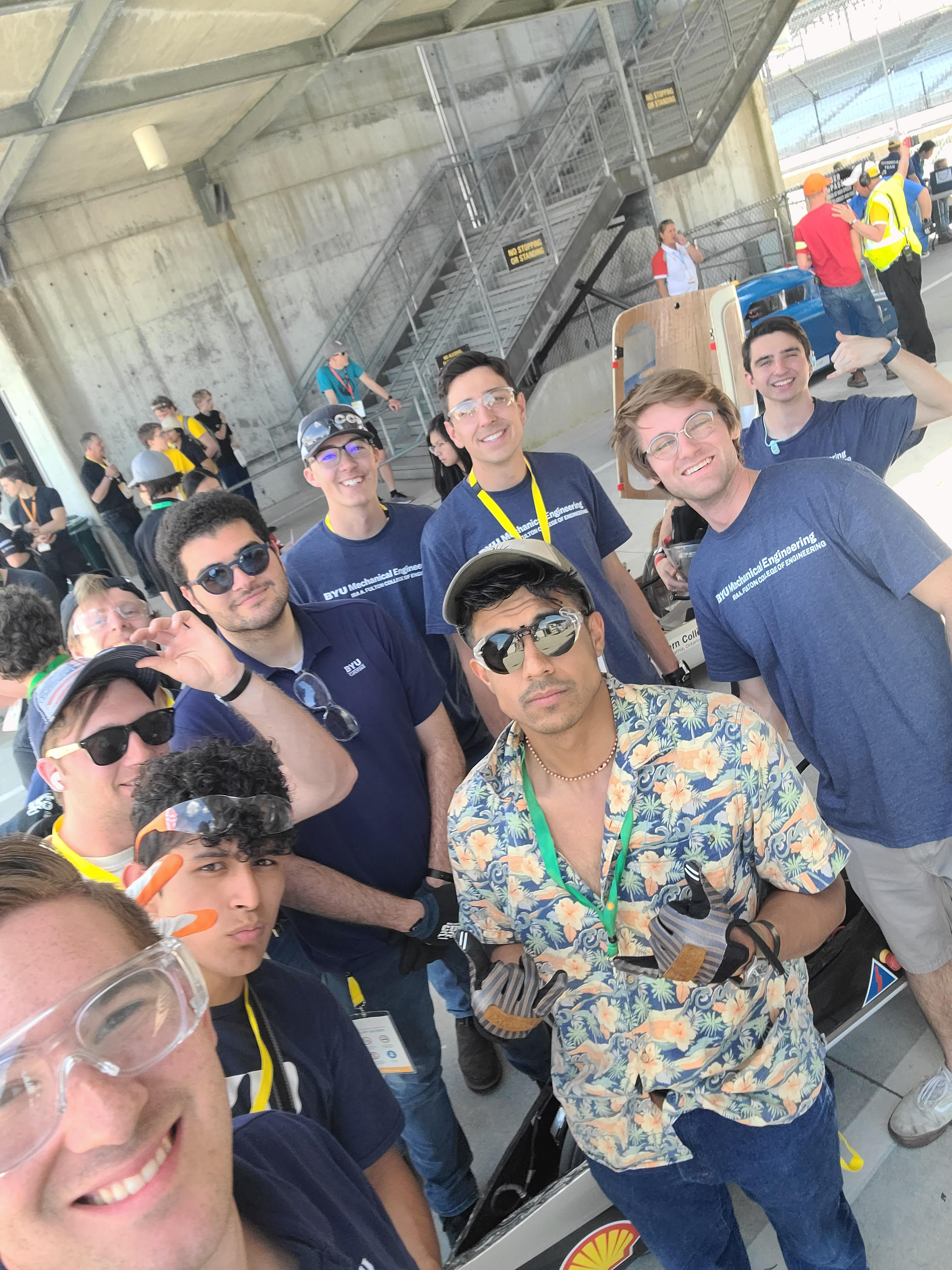
BYU began competing in supermileage competitions in 2012 under Jerry Bowman, an associate professor of mechanical engineering at BYU. After his retirement in 2017, Dr. Dale Tree, a professor and department chair in the Department of Mechanical Engineering at BYU took over the team.
“I don’t touch the vehicle or the engine, it’s all the students,” Dr. Tree said.
Between 2012 and 2019, the team increased the total distance their car could travel on a single gallon of gas by more than 1,200 miles.
When the COVID-19 pandemic began, the 2020 Shell Eco-marathon competition was shifted to a virtual program. In-person events did not begin again until the summer of 2022. During that time, many of the BYU team members had either graduated or lost interest in the competition, and the Department of Mechanical Engineering was debating shifting funds away from the team.
It appeared as though the team’s accomplishments would be the only legacy left behind.
In 2021, then BYU freshman Dino Christensen, who had just returned home from his mission, jumped at the opportunity to join the team before it was shut down, and began recruiting fellow students. While they were unable to prepare their car for the 2021-2022 season, the team buckled down to prepare for the 2022-2023 competition.
Now a junior, Christensen said because of the obstacles they faced this year as a team, they were able to improve their vehicle, work together and perform to the best of their ability.
The capstone engineering class began meeting in August 2022, focusing their efforts on improving their engine efficiency. Locations around the world have different altitudes, temperatures and humidity — each of which impact the fuel efficiency of gas-powered engines.
In previous years, BYU’s supermileage team worked for hours to calibrate the engine properly at the competition locations. This year, the team developed a system that would self-tune and self-optimize the engine in just five minutes.
Since the cars could not travel faster than 15 mph on the track, using a full gallon of gas for each of these fuel-efficient cars would take days to test. Instead, the competition challenged each car to race around the inner track of the Indianapolis Motor Speedway for four laps. After determining the gasoline use, participants could calculate the projected distance the car would have traveled on a single gallon.
The team arrived in Indianapolis and began preparing for the competition. After checking in on April 12, they focused on passing their technical inspection — the final test each team had to pass before being allowed on the track, or even to turn their engines on.
Recent BYU graduate David Calabuig focused on safety documentation while he was on the team, and served as the crew chief during the competition. Even though he was not on the racetrack itself, Calabuig said it was the coolest thing he’d ever done at BYU.
“Being a race engineer, where you’re in charge of lap times, fuel burn, strategy and traffic management, it’s a once in a lifetime experience that I never would have had otherwise,” Calabuig said.
BYU’s team had a number of challenges as they prepared for their competitive run.
While in transit from BYU, part of the vehicle was damaged, forcing them to build a new part from scratch. After passing the final inspection, the engine became finicky, occasionally refusing to turn over. After fixing the engine and replacing a battery, a tire blew out during one of their runs, forcing the team to be towed back to the starting line.
“It felt like the whole day was just one thing wrong after another,” BYU junior Dakota Mundell said.
Mundell was in charge of the tires, and had packed a spare into one of the boxes intended for the competition. When they went to replace the tire, the box of spares was no where to be found.
Luckily, another team donated a tire for them to use, and a local bike shop helped them mount the tire on the wheel. They made it back to the racetrack in time, managing to squeeze in three additional runs before the track closed at 6 p.m.
After each run, the car was towed to the fueling station, where two team members and the judges refilled the gas tank. The tank was filled with pipettes that were accurate down to the half-milliliter, which were then used to calculate the total distance the vehicle would run on a single gallon.
BYU senior David Leavitt remembers waiting for his teammates to come out with the final results.
“It was very nerve-wracking to just sit and wait for them to throw us a number. We kept refreshing the results page to see what we got,” Leavitt said.
The team’s second completed run gave them a score of 1915.83 mpg, which turned out to be the highest score of the entire competition.
“We were just excited to be able to pass the tech inspection,” Christensen said. “Let alone come out on top.”
The $3,000 award will go back into the supermileage team fund to help prepare for next year’s competition.
“If we were able to do that well this year, imagine what our chances will be next year,” Leavitt said.
The team plans to beat the previous school record of 1,985 mpg next year, shooting for 3,000 mpg.
After their successful run, several students joked about driving the car back from Indiana to Utah, a journey of 1,500 miles. While it would have taken Christensen just less than 100 hours to make the trip, it would have been done with less than a single gallon of gas.
“Eventually it would get there,” Mundell said. “But it would be quite the trip.”

